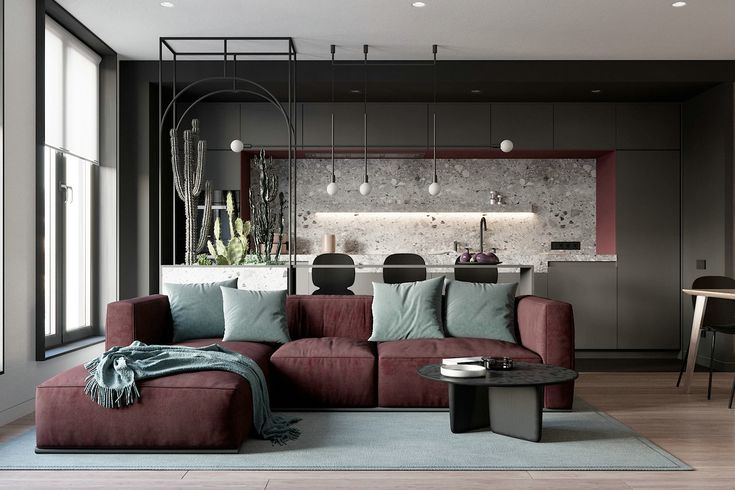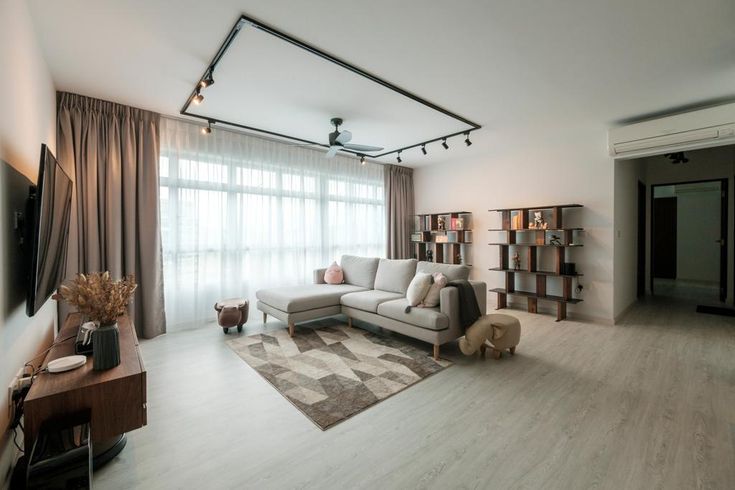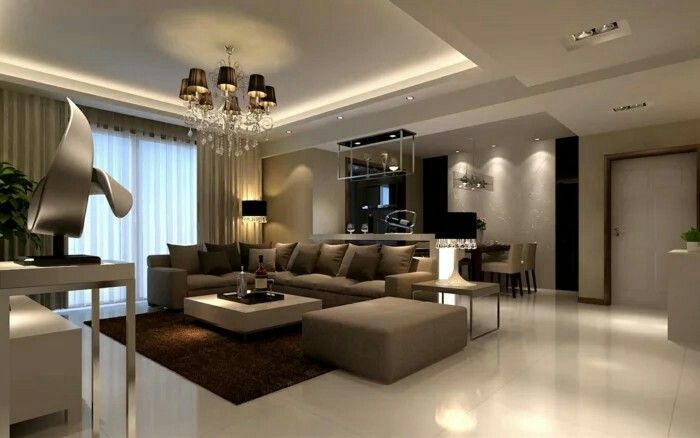Open Concept Living Room? Here’s How to Arrange Your Furniture
Open Concept Living Room? Here’s How to Arrange Your Furniture – Open concept living rooms have become a hallmark of modern home design, offering a spacious, airy, and versatile environment. However, arranging furniture in such spaces can be challenging due to the lack of distinct boundaries. How do you create defined zones without sacrificing the openness? How can you make the space both functional and aesthetically pleasing? Here’s a comprehensive guide to arranging furniture in an open concept living room, optimized for both style and practicality.
1. Understand the Layout
Before diving into furniture placement, take time to understand the layout of your open concept living room. Consider the following:
- Natural Pathways: Identify natural walking paths to ensure your furniture doesn’t obstruct movement.
- Architectural Features: Note elements like windows, fireplaces, and built-in shelves that can guide furniture placement.
- Purpose of the Space: Decide how you want to use the space—entertaining, relaxing, or a mix of activities.
2. Define Zones
Open concept spaces benefit from clearly defined zones for different activities. Use the following strategies to create distinct areas:
- Area Rugs: Use rugs to anchor each zone. For instance, a large rug can define the seating area, while a smaller one can highlight a dining nook.
- Furniture Placement: Position sofas and chairs to form a natural boundary for the living area.
- Room Dividers: If you need extra definition, consider open shelving units or decorative screens.
3. Choose Multi-Functional Furniture
In open concept spaces, every piece of furniture should serve a purpose. Multi-functional pieces are ideal for maximizing the area:
- Sectional Sofas: These can define the living area while offering ample seating.
- Ottomans with Storage: Use them as a coffee table, extra seating, or hidden storage.
- Extendable Dining Tables: Perfect for adapting to both everyday meals and larger gatherings.
4. Create a Focal Point
Every room needs a focal point to anchor the design. In an open concept living room, this can be:
- A Statement Piece: A bold artwork or a unique piece of furniture can draw attention.
- A Fireplace or Media Wall: Arrange furniture around a fireplace or a TV to create a cohesive seating area.
- Large Windows: Use natural light as a feature by positioning furniture to take advantage of the view.
5. Mind the Flow
Maintaining a good flow is essential in open concept spaces. Here’s how to ensure smooth movement:
- Space Between Furniture: Leave enough room between pieces for easy navigation.
- Low-Profile Furniture: Opt for pieces that don’t block sightlines, keeping the space feeling open.
- Consistent Design Elements: Use similar colors, materials, and textures to tie different zones together.
6. Use Lighting to Your Advantage
Lighting is a powerful tool for defining and enhancing your open concept living room:
- Layered Lighting: Combine overhead lights, floor lamps, and table lamps to create a versatile ambiance.
- Accent Lighting: Highlight specific areas or features with spotlights or under-cabinet lighting.
- Dimmer Switches: Adjust the intensity of the lights to suit different moods and activities.
7. Balance Openness and Privacy
While open concept designs are spacious, they can lack privacy. Here’s how to balance the two:
- Tall Plants: Use greenery to add visual interest and a sense of separation.
- Curtains or Drapes: Install curtains to section off areas temporarily.
- Furniture Arrangement: Position furniture to subtly create intimate spaces within the open layout.
8. Incorporate Personal Style
Your living room should reflect your personality and preferences. Add personal touches to make the space uniquely yours:
- Artwork and Decor: Display pieces that resonate with you, like family photos or travel souvenirs.
- Textiles: Incorporate cushions, throws, and curtains in your favorite colors and patterns.
- Books and Collectibles: Use open shelving to showcase books and cherished items.
9. Consider Practical Needs
An open concept living room should be as functional as it is beautiful. Keep these practical considerations in mind:
- Storage Solutions: Use built-in shelves, sideboards, or storage ottomans to keep clutter at bay.
- Durable Materials: Choose furniture made of sturdy, easy-to-clean materials, especially if you have kids or pets.
- Tech Integration: Plan for hidden cable management and convenient access to power outlets.
10. Experiment and Adapt
Lastly, don’t be afraid to experiment with different arrangements. Open concept spaces offer flexibility, so take advantage of it:
- Rearrange Periodically: Change the layout to keep the space feeling fresh and dynamic.
- Seasonal Updates: Swap out decor elements to match the seasons.
- Seek Feedback: Get input from family or friends to see if the arrangement works well for everyone.
Final Thoughts
Arranging furniture in an open concept living room is an art that combines creativity, functionality, and personal taste. By defining zones, selecting multi-functional furniture, and paying attention to flow and lighting, you can transform your space into a harmonious and inviting environment. Remember, the key is to strike a balance between openness and coziness while reflecting your unique style.






